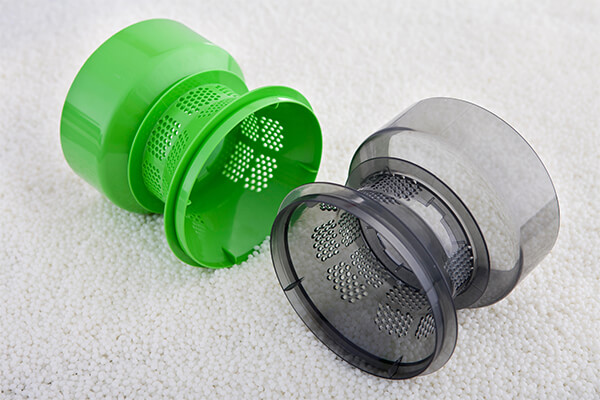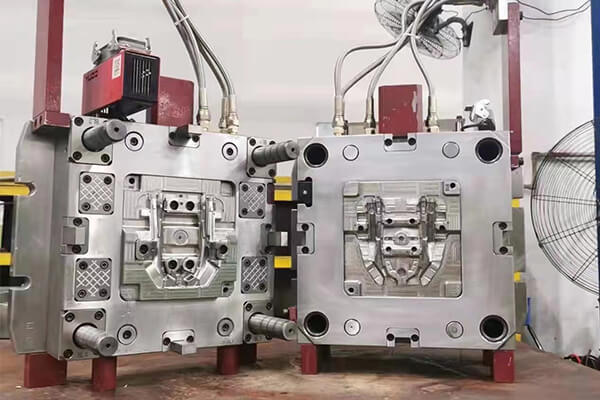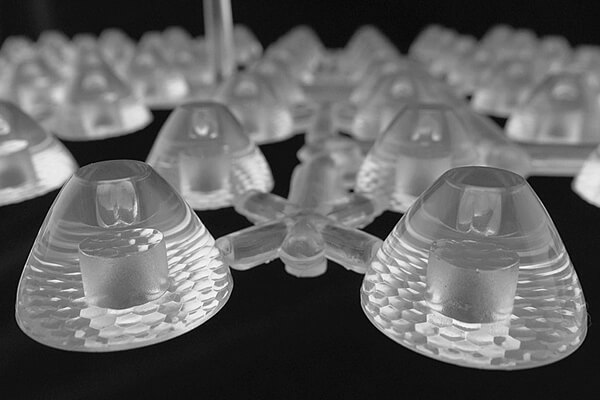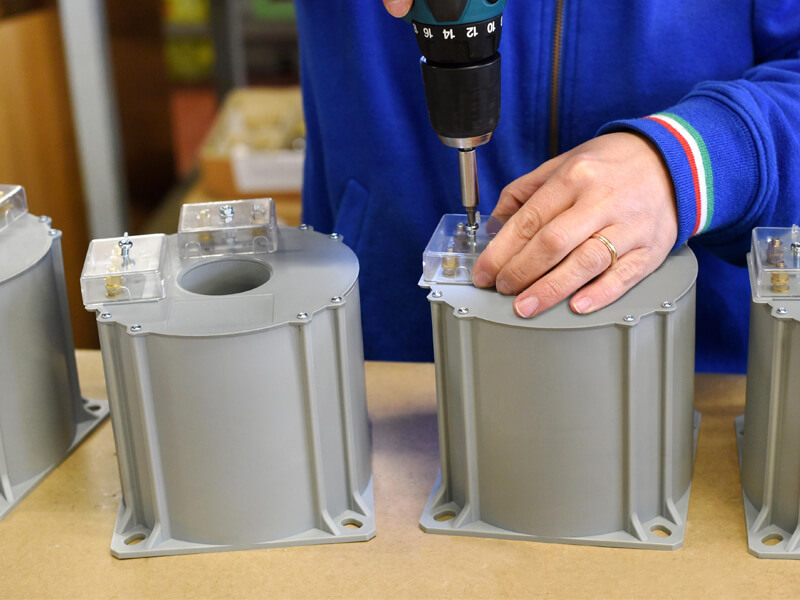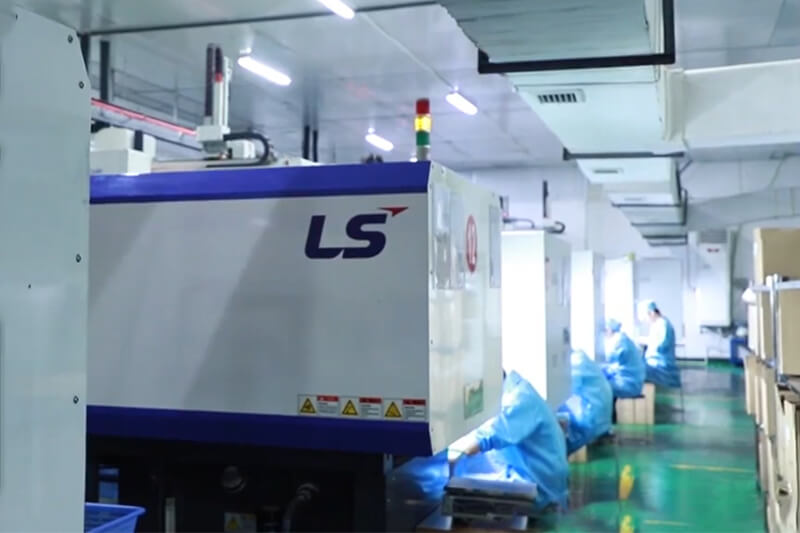How Much does Injection Molding Cost for Manufacturers?
It’s worth noting that mass production can be expensive to start up, but as production continues, projects get better and better. Plastic injection molding is one of the cheapest and most cost-effective forms of manufacturing if you consider the unit price. With injection molding, the more units that are molded, the cheaper the unit price.
What is Injection Molding?
Injection molding is a manufacturing process that produces plastic parts by injecting molten plastic material into a mold cavity.It is one of the most commonly used processes for the mass production of high-precision and repeatable plastic parts. Injection molding is used in a wide variety of industries, including automotive, consumer goods, electronics, medical devices, and more. Understanding the production costs of injection molded parts is critical before considering this process for your manufacturing operation.
Sungplastic as a reputable injection molding company provides plastic customization services, including product design and development, prototyping, post-production services such as packaging and shipping. If you want to know the injection molding cost, please contact us, we will provide you with an instant quotation.

How Injection Molding Cost Affects Product Market?
Injection molding costs have a direct impact on the final product market in several ways:
- 1.Pricing: Plastic injection molding costs significantly influence the pricing of the final product. The expenses incurred in tooling, materials, equipment, labor, and overhead costs are factored into the product’s price. Higher injection molding prices can lead to higher product prices, making the product less competitive in the market. On the other hand, effective management of injection molding costs can help manufacturers offer competitive pricing, making the product more appealing to customers.
- 2.Profitability: Plastic injection molding costs directly affect the profitability of the product. If the costs associated with injection molding are high and not effectively managed, it can eat into the profit margins. Manufacturers need to ensure that the product’s selling price covers the production costs, including injection molding costs, while still providing a reasonable profit margin.
- 3.Product Differentiation: Plastic injection molding costs can impact the ability to differentiate the product in the market. Depending on the cost structure, manufacturers may have limitations in terms of design complexity, material selection, or customization options. Higher injection molding costs may restrict the ability to offer unique or innovative features, impacting the product’s competitiveness and market positioning. Conversely, cost optimization strategies can provide manufacturers with more flexibility to differentiate their products, offering unique features or customization options that appeal to customers.
- 4.Market Competitiveness: Plastic injection molding costs play a crucial role in determining the product’s competitiveness in the market. If a similar product is available at a lower price due to more efficient injection molding processes or cost-saving strategies, it can create a competitive disadvantage. Manufacturers who effectively manage and optimize injection molding costs can achieve a competitive edge by offering products with attractive pricing, better quality, or enhanced features compared to their competitors.
- 5.Market Entry and Expansion: Plastic injection molding costs can impact the decision to enter new markets or expand product lines. High injection molding costs may pose barriers to entry for manufacturers, especially in price-sensitive markets. Conversely, lower injection molding costs can facilitate market entry, enabling manufacturers to offer competitive pricing and capture new market segments.
- 6.Manufacturing Efficiency: Efficient management of injection molding costs can improve overall manufacturing efficiency. By identifying and implementing cost-saving strategies, manufacturers can streamline production processes, reduce waste, minimize downtime, and optimize equipment utilization.
In summary, plastic injection molding costs have a significant impact on the product market. They influence pricing, profitability, product differentiation, market competitiveness, market entry, and overall manufacturing efficiency. By effectively managing and optimizing injection molding costs, manufacturers can enhance their market position, meet customer expectations, and achieve sustainable success in the marketplace.
Injection Molding Cost Considerations in Product Development
Considering injection molding prices during product development is crucial for optimizing the manufacturing process, controlling expenses, and ensuring the overall profitability of the product. Here are some key considerations regarding injection molding costs in product development:
- 1.Design for Manufacturability (DFM): Designing the product with manufacturability in mind can significantly impact injection molding prices. Simplifying the design, reducing part complexity, and minimizing the number of components can help lower tooling and production costs.
- 2.Material Selection: Different injection molding materials have varying costs, and selecting cost-effective materials that meet the required performance and quality standards is essential. Consider factors such as material availability, recyclability, and the ability to optimize material usage during the injection molding process.
- 3.Part Consolidation: Reducing the number of individual components in the product can lower tooling and production costs. Designing parts that can be combined or integrated can help streamline the injection molding process and reduce costs.
- 4.Draft Angles and Wall Thickness: Draft angles allow for easy ejection of the part from the mold, while uniform and optimal wall thickness ensures proper filling, cooling, and structural integrity. Avoiding excessive wall thickness or abrupt changes can minimize material usage and reduce cycle time, leading to cost savings.
- 5.Undercuts and Complex Features: Design features such as undercuts, threads, or complex geometries can increase tooling complexity and cost.
- 6.Prototyping and Testing: Investing in prototyping and testing early in the product development process helps identify and address potential issues or design flaws. This avoids costly modifications or tooling changes later in the production phase.
- 7.Supplier Collaboration: Suppliers are involved in the product development process. Their expertise can provide valuable insights into design optimization, material selection and tooling considerations, helping to reduce costs and improve manufacturability. Sungplastic, as an experienced mold supplier, we can advise on your products and help you manufacture high-quality injection molds to make durable and reliable plastic molded parts.
- 8.Cost Analysis and Iterative Improvements: Conducting cost analyses at various stages of product development allows you to assess the impact of design changes on injection molding pricess. Continuously evaluate and refine the design, manufacturing processes, and material selection to achieve the optimal balance between cost, quality, and functionality.
By incorporating these considerations into the product development process, manufacturers can proactively address injection molding costs, optimize designs for cost-effective production, and enhance the overall competitiveness of their products in the market.
Injection Molding Tooling Cost
Normally, the main cost driver in injection molding is the tooling cost. The cost of designing and building a mold depends on the required production volume, the complexity of the part design, mold material, and the process used to create the mold. Here are the key factors influencing injection molding tooling cost:
- 1.Mold Complexity: The complexity of the mold design impacts the tooling cost. Molds with intricate features, undercuts, complex geometries, or multiple cavities require more intricate tooling and machining processes, leading to higher costs.
- 2.Mold Size: The physical size of the mold affects tooling costs. Larger molds require more material, longer machining times, and may necessitate specialized equipment, resulting in higher expenses.
- 3.Mold Material: The type of material used for the mold impacts the tooling cost. Common mold materials include steel, aluminum, and pre-hardened steel. Steel molds are generally more expensive but offer higher durability and longer lifespan, while aluminum molds are less costly but have a shorter lifespan.
- 4.Mold Design and Engineering: The design and engineering work involved in creating the mold impacts the tooling cost. This includes 3D modeling, prototyping, mold flow analysis, and collaboration with mold designers and engineers.
- 5.Tooling Manufacturing Processes: The specific manufacturing processes used to fabricate the mold contribute to the tooling cost. This includes machining, CNC milling, EDM (Electrical Discharge Machining), heat treatment, polishing, and surface finishing.
To manage injection molding tooling costs effectively, manufacturers can consider factors such as design simplification, material selection and optimizing the manufacturing processes to improve efficiency and reduce expenses.
Injection Molded Parts Cost
The cost of injection molded parts is influenced by various factors related to mold maintenance, part formation time, and plastic considerations. These factors include the part rate, estimated scrap amount (typically 3-5%), plastic weight, and sometimes a mold maintenance fee that covers injection mold warranties. The injection molding quote should also encompass any setup costs associated with the molds.
- 1.Injection Molding Cycle Time:
Approximately 60% of the final part cost is attributed to injection molding cycle time. The part rate depends on both cycle time and cavitation. Manufacturers typically have predefined hourly rates for their machines.The molding cycle consists of two stages:
a:Injection time: This refers to the duration it takes for the polymer material to be injected into the mold. It usually lasts a few seconds and depends on the machine’s power and shot size.
b:Cooling time: This accounts for approximately 80% of the entire cycle time. It significantly affects the quality of the final part as it allows the material to cool and shrink.For manufacturers, minimizing cycle time is preferable as it translates into producing more parts within a given timeframe.
- 2.Mold Cavitation:
Mold cavitation cost is another factor affecting the price per part rate and increases with the number of cavities. Cavitation refers to the number of identical cavities within a mold that produce parts. The injection mold itself can be quite expensive.
Mold cavitation is influenced by part size and design. For relatively simple parts, single cavity molds are generally more cost-effective. However, if the part’s geometry allows, opting for multiple-cavity molds can expedite the production process, making it more economical over time. Larger parts may not allow for multiple cavities.
Injection molds can either be purchased as ready-made or custom-made. Using ready-made molds is a common and less expensive option, especially in the electronics industry where standardization is prevalent. Alternatively, you can have a mold custom-made, which is more suitable for unique designs.
It’s important to ensure that the geometry of custom injection molds is compatible with the manufacturer’s machine. This constraint may impact your project and possibly require design adjustments, so verifying the manufacturer’s capabilities is recommended.
- 3.Plastic Weight:
- 4.Injection Molding Setup Costs:
Plastic weight cost includes both the plastic used to form the parts and the hardened plastic remaining in the mold. You need to account for the plastic weight not only in the parts themselves but also in the runner, sprue, and gate. The runner and sprue are channels through which molten plastic flows into the mold, while the gate prevents plastic from flowing out once inside.
Scrap rates are also factored into the final cost of injection molding. These rates cover purging the plastic injection molding machines of previous plastics and reloading them with your desired plastic.
Mold setup costs encompass optimizing the process and physically preparing the materials and machinery for producing your parts. These costs contribute to the final price per part. The process will be optimized, and there may be setup time involved in preparations, which most companies charge as a separate flat fee. This may include activities like resin drying, mold hanging, arranging water lines, addressing external issues, incorporating mold sensors, and any special cooling requirements. It may also involve specific gating schemes that function as a hot manifold system, keeping the runners hot enough to maintain the plastic in a liquid state.
Additional Services Affecting Injection Molding Prices
Additional services such as finishing, post-processing services, inspection, and packaging incur extra costs that contribute to the price per part and setup fees.
- 1.Secondary Services:
Secondary services vary in cost, and often there may be discounts available when ordering injection molding and secondary services from the same provider (which also reduces shipping costs from multiple facilities).These services can include:
Additional manufacturing processes such as machining, drilling, and inserting components.
Assembly services including gluing and sonic welding.
Decorating or marking processes like pad printing logos or designs.While some parts may not require secondary services, others do. The least expensive parts simply come out of the machine and are placed in a box, but others may be attached to the gate and require post-processing machining to remove it. The gating process is utilized to improve overall efficiency and minimize waste. - 2.Part Packaging:
Part packaging costs vary depending on whether you need packaging for consumers or solely for shipping purposes. Larger manufacturers may employ automatic packaging systems, which reduce the risk of errors and damage.
If your provider is expected to deliver a product that is ready to use or nearly ready to use, the packaging used may be the one directly presented to your customers. Some providers also offer personalized packaging services to enhance branding and customer experience. - 3.Part Inspection Requirements:
Costs associated with part inspection requirements for quality assurance can include standard inspection or specialized certification, with specialized certification incurring higher costs. The injection molding process itself can introduce defects of various degrees to the parts, and the acceptability of these defects depends on industry standards.
Trained personnel are responsible for validating the quality of the parts in your order. In cases where the parts do not meet the requirements, the quality verification team of your provider will identify the specific area and potential cause of the issue. This is handled as part of the internal process and should not result in additional costs.
Some companies offer the option of obtaining additional certifications for your parts at an extra cost. This involves the involvement of specialized and licensed engineers who can provide these certifications according to legal requirements. Such services are crucial, especially in industries like automotive, where safety-critical parts are involved.
Factors Affecting Injection Molding Costs
Several factors can affect injection molding pricess. Understanding these factors is crucial for manufacturers to estimate and manage their expenses effectively. Here are the key factors that influence injection molding costs:
- 1.Part Complexity: The complexity of the part being molded is a significant factor in determining the cost. Parts with intricate designs, undercuts, thin walls, complex geometries, or tight tolerances require more advanced tooling, additional machining operations, and longer cycle times, leading to higher costs.
- 2.Material Selection: The choice of material for injection molding affects the cost. Factors such as material availability, performance characteristics, and specific requirements of the part impact the overall material cost.
- 3.Part Size and Weight: The physical size and weight of the part influence injection molding pricess. Larger parts require more material, longer molding and cooling cycles, and may necessitate larger machines or specialized equipment, resulting in higher costs.
- 4.Part Quantity: The desired quantity of parts affects the cost. Injection molding processes are typically more cost-effective for high-volume production. However, lower quantities may require different production approaches, such as rapid tooling or prototyping, which can impact costs.
- 5.Production Volume: The production volume required affects the overall cost. High-volume production allows for better cost amortization over a larger number of parts, reducing the cost per part. Conversely, low-volume production may incur additional setup costs and may require different production approaches, impacting costs. Sungplastic are supporting on-demand manufacturing services at any time.
- 6.Surface Finish and Secondary Operations: The desired surface finish of the part and any required secondary operations, such as post-molding machining, assembly, or finishing, can influence costs. Complex or labor-intensive secondary operations can add to the overall expenses.
- 7.Quality Requirements: Stringent quality requirements, such as tight tolerances, specific certifications, or specialized testing, may affect costs. Meeting these requirements may involve additional inspection, testing, or process control measures, which can increase costs.
- 8.Injection Molding Automation: Injection molding automation can help reduce injection molding costs by increasing production efficiency, minimizing labor requirements, improving process consistency, reducing material waste, and optimizing cycle times. It allows for faster and more cost-effective production of high-quality parts.
- 9.Geographic Location: The geographic location of a manufacturing facility can affect injection molding costs. Sungplastic is a China plastic molding manufacturer and we have rich production experience and abundant raw materials to meet your custom plastic parts needs.
It’s important to note that these factors are interrelated, and changes in one factor can influence others. Manufacturers need to carefully consider these factors and strike a balance between cost, quality, and product requirements to optimize injection molding costs and ensure competitiveness in the market.
How to Reduce the Cost of Injection Molding?
To ensure a cost-effective approach to low-cost injection molding, it is crucial to be strategic in identifying areas where savings can be made without compromising quality. Here are some tips to achieve this balance:
- 1.Transparent Tooling Budget: Communicate openly with the manufacturer about your budget constraints from the beginning. While plastic injection molds are generally expensive, understanding the costs upfront allows for better planning. The budget will depend on factors like the application and production volume.
- 2.Utilize Plastic Waste: Incorporate hardened plastic from sprues, runners, and post-processing cutoffs to reduce material costs. However, be aware that there is a limit to how many times plastic and additives can be recycled due to a gradual decrease in mechanical properties. For instance, glass filler fibers become shorter with each recycling step, leading to reduced tensile and impact strengths.
- 3.Automation and Robotics: Integrate automation and robotics where applicable to streamline production, reduce labor costs, and improve efficiency. Automated processes can increase throughput, minimize errors, and enhance overall productivity.
- 4.Purchase Replacement Components: Invest in replacement components upfront, even though it incurs additional costs. This proactive approach helps minimize downtime and expenses in the long run, serving as a form of insurance against unexpected issues.
- 5.Optimize Design Efficiency: Focus on essential features during the concept stage that ensure optimal part performance. Avoid elements that are merely “nice to have” but do not contribute significantly to the part’s market value. Streamlining the design can reduce complexity and associated costs.
- 6.Evaluate Part Appearance Relevance: Consider the necessity of glossy or shiny finishes for your project. If enhanced aesthetics do not directly translate into increased sales or value, eliminating them can help reduce costs without compromising functionality.
- 7.Explore Insert Molding: Implementing insert molding involves placing one product inside a mold and encasing it with plastic. This technique allows for the integration of multiple products using inserts, which can be removed or repositioned in subsequent cycles. It offers versatility and can contribute to cost savings.
- 8. Choose a Reputable Company: Select a reputable supplier that offers on-site tool repair capabilities. This ensures that as tooling wears or breaks, it can be efficiently addressed. Sungplastic will provide a mold guarantee for a specific number of cycles based on our capabilities.
By applying these tips, you can achieve cost reductions in injection molding while maintaining product quality and functionality.
Injection Molding with Sungplastic
Injection molding costs vary based on factors such as materials, equipment, packaging, and additional services. Sungplastic offers all the injection molding services you could possibly need, from low-cost injection molding to mass-produced parts. There are even material options such as thermoplastic, thermoset silicone, and metal injection molding. Providing us with basic information about a custom product helps us create the best tool for your project.
Contact Sungplastic today to get an injection molding instant quote for your project. Whether it is a simple injection molding project or a complex project, our injection molding experts will produce the molded product to meet your satisfaction.
About Sungplastic
Sungplastic is a plastic product manufacturer with rich experience in injection molding. According to the different product development requirements, we flexibly adjust the manufacturing process to achieve high quality, high efficiency and more economical.
We offer a variety of manufacturing services: Rapid Prototyping, Tool Making, Injection Molding, Product Design and Development, CNC Machining and Metal Stamping. You can choose from a variety of plastics, silicone rubber, or metal for your product. Regardless of mass production or small batch customization, Sungplastic has always been committed to providing assured, efficient and more economical one-stop processing services for your projects.
Contact us for a free quote and project review.
Get a free quote and design analysis today.
We’ll reply you within 6 working hours. We respect your privacy.

